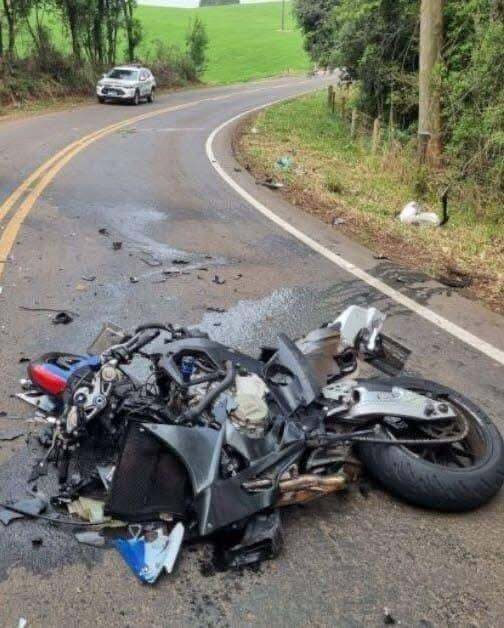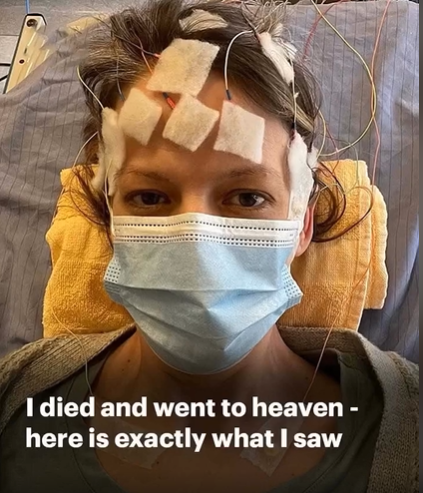On what should have been a calm and uneventful Saturday afternoon, residents of the steep, crowded neighborhoods of Pamplona Alta in San Juan de Miraflores went about their usual routines. Children played in the narrow walkways, families prepared late lunches, and neighbors exchanged greetings as they moved through the lively hillside community. But that ordinary rhythm shifted abruptly when a sudden fire ignited—one that would quickly grow into one of the most destructive events the district has faced in recent memory.
Within a short period, smoke drifting from a single home escalated into a massive blaze that tore through clusters of houses. As flames spread unchecked across the densely packed neighborhood, hundreds of residents were forced to flee with little more than what they could carry. By the time firefighters managed to contain the inferno, a wide swath of the sector had been left in ruins.
This incident, while shocking, also highlights long-standing challenges affecting informal settlements throughout Lima. The fire not only revealed the vulnerability of precariously built neighborhoods but also underscored deeper structural issues related to housing shortages, informal construction practices, and hazardous underground economic activities. This article explores how the fire began, how the community responded, what early investigations have shown, and why the event calls attention to urgent urban development concerns that impact thousands of families.
A Normal Day Turned Unthinkable: The First Signs of Trouble
Witnesses said the first hints of danger were subtle—a faint burning odor and a thin line of smoke rising from a home halfway up the hillside. At first, many residents assumed the smell came from a routine cooking incident or perhaps a minor electrical problem. These types of small mishaps are relatively common in informal settlements where household wiring can be overloaded or improvised.
However, the situation escalated quickly. The smoke thickened and darkened, becoming much more noticeable within minutes. Soon, flames could be seen rising above the rooftop of the first affected home. The heat intensified rapidly, pushing outward and upward along the slope. Realizing the risk, neighbors rushed out of their homes, alerting others and urging immediate evacuation.
Community members attempted to take action with whatever tools they had—buckets, hoses, and even wet blankets—to prevent the flames from moving toward nearby homes. People helped elderly residents escape, carried children to safer ground, and tried to gather essential documents, medications, or treasured valuables before the fire reached their homes.
Despite these early efforts, it became clear that the blaze was too large and too fast-moving for residents to control on their own.
A Difficult Battle for Firefighters: Challenging Terrain and Limited Access
Firefighters in Lima are accustomed to responding to emergencies in densely built areas, but the steep and crowded terrain of Pamplona Alta presented enormous challenges. The narrow pathways, the layout of homes stacked along the hillside, and the limited road access made it difficult for firetrucks to get close to the scene.
According to statements from early responders, the fire spread in a chain-like pattern—each burning structure generating enough heat to ignite the one beside it. The materials used in many of the homes, such as wood, recycled panels, cardboard, and thin metal sheets, allowed flames to move quickly from building to building.
Firetrucks that positioned themselves at the base of the hill could pump water only to a certain height. Fire crews had to physically carry hoses up steep inclines, working on uneven ground and navigating through thick smoke. In some cases, hoses needed to be extended hundreds of meters up the hillside to reach the upper homes already engulfed in flames.
Despite these obstacles, firefighters pressed on. Local volunteers joined their efforts, helping carry equipment, offering water, and supporting the evacuation of residents. After hours of coordinated work, crews finally contained the blaze and prevented it from spreading into adjacent sectors.
Still, the damage was substantial.
Assessing the Destruction: Conflicting Early Estimates
As soon as news spread, journalists and community leaders attempted to assess the extent of the loss. Initial estimates varied significantly. Some reports claimed dozens of homes were destroyed; others suggested the figure might exceed a hundred. One challenge was that densely packed settlements often contain multiple families living within a single dwelling, making accurate counts difficult in the aftermath of a disaster.
By the end of the first day, emergency personnel provided the first preliminary assessments. They reported that:
- A significant number of homes in the block were destroyed or severely damaged
- Many families had lost nearly all of their belongings
- Several hundred people had been displaced
- Important possessions such as school supplies, appliances, work tools, and personal documents had been lost
- Dozens of children were among those affected
For many residents, even the loss of a single room or a small portion of their home would have been devastating. For those who lost everything, the impact was immeasurable.
A Critical Discovery: An Informal Fireworks Workshop
As firefighters fought the flames, many residents heard sharp popping sounds echoing across the hillside. These loud bursts alarmed people attempting to escape and complicated the work of responders. Shortly afterward, authorities confirmed that the noises likely came from a clandestine fireworks workshop operating within the affected area.
Unauthorized workshops producing homemade fireworks are not uncommon in some districts of Lima. These establishments sometimes store flammable powders, chemicals, small devices, and fuses in cramped spaces, without the permits or safety standards required to handle such materials.
Investigators have suggested that the workshop may have played a major role in the rapid escalation of the fire, possibly even serving as the ignition point. If confirmed, this would reinforce the long-standing concerns about informal fireworks production in residential areas.
Authorities are currently looking into:
- The source of the fire
- Whether hazardous materials were improperly stored
- Whether the operators were aware of the risks
- Whether similar workshops may exist nearby
Regardless of the final findings, the situation highlights the broader need for safe work alternatives and effective oversight in communities where informal economic activity is often the primary source of income.
Voices of the Community: Stories of Loss and Fear
Residents who experienced the fire firsthand spoke openly about the panic and grief they felt. Many described waking to shouts from neighbors or noticing smoke suddenly filling the sky. Some fled their homes carrying only children or pets. Others remembered intense heat as they navigated through narrow walkways.
Several residents shared sentiments along the following lines:
- “We built our house little by little, saving whatever we could. Now we must start again.”
- “My children lost all their school materials and belongings.”
- “The explosions made everything worse—we didn’t understand what was happening.”
- “We tried to save our neighbors’ homes, but the fire moved too fast.”
Some families had lived in the community for decades. Others were newer arrivals who had migrated in search of stability or job opportunities. For all, the fire represented a loss not only of property but of safety, familiarity, and the sense of home they had built over time.
Emergency Shelters and the Search for Aid
When the fire was finally extinguished, hundreds of residents gathered in open spaces, some holding bags of rescued belongings and others left without anything at all. Local authorities, humanitarian organizations, and neighborhood associations quickly organized assistance for those displaced.
Emergency support included:
- Temporary shelters
- Blankets, mattresses, and basic hygiene kits
- Food and bottled water
- First-aid services
- Psychological support teams, especially for children
Despite these efforts, the needs surpassed the available supplies. Many families spent the night outdoors, exposed to cold evening temperatures typical of Lima’s coastal climate. Volunteers and neighbors from surrounding districts mobilized to provide additional donations, clothing, food, and other essentials. Social media also played an important role by facilitating community-led support initiatives.
Why Fires Spread So Rapidly in Lima’s Hillside Settlements
Although the Pamplona Alta fire was severe, the factors that allowed it to spread so quickly are not unique to this neighborhood. Several conditions make fires in informal settlements particularly dangerous:
1. Extremely High Density
Homes are often built very close together. A small fire in one structure can easily reach a neighboring home in a matter of minutes.
2. Flammable Construction Materials
Many houses rely on materials like wood, thin metal sheets, or recycled panels that ignite easily and burn fast.
3. Lack of Formal Infrastructure
Few buildings have fire-resistant features, sprinkler systems, or reinforced structural elements.
4. Difficult Access for Emergency Responders
Steep slopes, limited roadways, and narrow paths can delay firefighting crews and restrict the movement of heavy equipment.
5. Informal Workshops
Workshops such as carpentry shops, food stands, or fireworks producers sometimes operate without adequate safety measures.
Together, these conditions form a situation where even a small spark can quickly escalate into a widespread emergency.
The Need for Reform: Long-Term Solutions to Prevent Future Tragedies
The fire in Pamplona Alta has renewed discussions among community leaders, urban planners, and government officials about long-term solutions for fire prevention and safer housing. Some of the proposals include:
- Strengthening construction and safety regulations in high-risk areas
- Improving electrical safety through community programs and infrastructure upgrades
- Offering safer economic options for households that rely on high-risk informal workshops
- Creating firebreaks between dense clusters of homes
- Expanding access roads to improve emergency response times
- Forming and supporting local community brigades trained in first-response firefighting
While such reforms have been suggested before, significant challenges—including limited funding, bureaucratic complexity, and the large scale of informal settlement populations—have slowed their implementation.
The Path Forward: Rebuilding and Restoring Stability
In the days following the fire, residents of the affected area began the long process of cleaning debris, salvaging what they could, and constructing makeshift shelters. Although the loss was immense, the community demonstrated remarkable solidarity. Neighbors helped one another clear pathways, gather materials, and care for children and elderly residents.
Recovery will require coordinated support from public institutions, charitable organizations, and private partners. Some families face additional challenges because they do not have formal property documentation, making it more difficult to qualify for certain aid programs. Others will require long-term assistance to replace the homes and belongings they lost.
Even with these obstacles, the strong sense of unity that characterizes many hillside communities remains a foundation for resilience. Residents are determined to rebuild—not just their homes, but also their sense of stability and security.
A Community’s Call to Action
The fire in Pamplona Alta is more than an isolated incident. It is a powerful reminder of the vulnerabilities faced by countless families who live in informal settlements throughout Peru. It reveals the urgent need to address systemic issues—housing inequality, limited infrastructure, and unsafe working conditions—that lie beneath such disasters.
Above all, this is a human story. It is the story of families who lost their homes in a matter of minutes, of parents who carried children through smoke, of grandparents helped down narrow slopes, and of firefighters who risked their safety to contain the blaze. As the community begins to rebuild, their perseverance and solidarity serve as an example of strength in the face of hardship.
Meaningful recovery will require sustained attention, long-term planning, and a commitment to safer and more equitable urban development. For now, the residents of Pamplona Alta continue supporting one another as they take the first steps toward healing and rebuilding.




